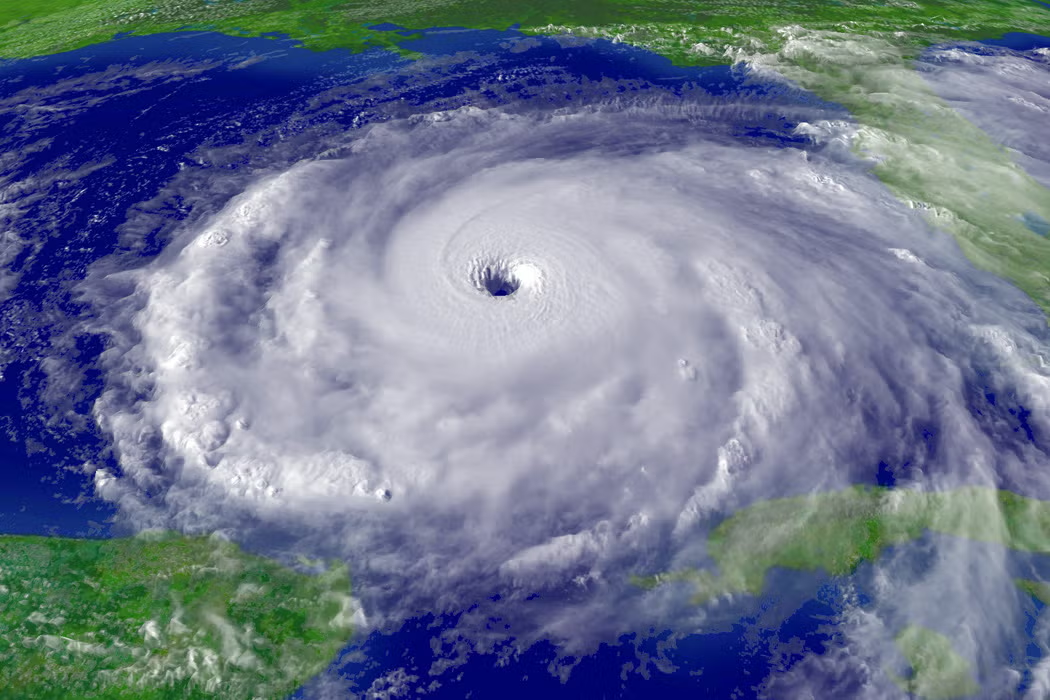
Colorado State University hurricane researchers are maintaining their forecast for a slightly above-average 2025 Atlantic hurricane season. CSU’s Tropical Cyclones, Radar, Atmospheric Modeling, and Software (TC-RAMS) team within the Department of Atmospheric Science cites above-average tropical Atlantic Ocean and Caribbean Sea surface temperatures as a primary factor for their prediction of eight total hurricanes this year.
The tropical Atlantic has warmed faster than normal over the past few weeks, due to relatively weak winds blowing across the area, leading to less evaporation and mixing of the ocean surface. Warmer than normal waters in the tropical Atlantic and Caribbean Sea tend to favor an above-average season, since a hurricane’s fuel source is warm ocean water. Additionally, a warm Atlantic leads to lower atmospheric pressure and a more unstable atmosphere. Both conditions favor hurricane formation.
The tropical Pacific is currently characterized by El Niño-Southern Oscillation (ENSO) neutral conditions. There remains some uncertainty as to what the phase of ENSO will be during the peak of the Atlantic hurricane season from August to October, but the odds of El Niño are quite low (6% per the latest NOAA outlook). El Niño – a recurring climate pattern – tends to increase upper-level westerly winds across the Caribbean into the tropical Atlantic. These increased upper-level winds result in increased vertical wind shear, reducing the odds of Atlantic hurricane formation. The absence of El Niño, as anticipated this year, is generally associated with upper-level wind conditions that are conducive for hurricane development across the tropical Atlantic.
While both the warmer-than-normal tropical Atlantic and lack of El Niño favor an above-normal Atlantic hurricane season, Caribbean shear has been much stronger than normal in June and July, despite the lack of El Niño conditions. Higher shear typically is associated with less active Atlantic hurricane seasons. However, several climate models are forecasting this shear to drop considerably during August.
Researchers caution that there is more uncertainty with the August forecast this year than last year, given the high June–July Caribbean shear pointing towards a much less active season than what would otherwise be anticipated from the warm tropical Atlantic and lack of El Niño.
Colorado State University team predicts 16 named storms and eight hurricanes in 2025
The CSU team is predicting 16 named storms during the Atlantic hurricane season, which began on June 1 and runs through Nov. 30. Of those 16 storms, researchers forecast eight to become hurricanes and three to reach major hurricane strength (Saffir/Simpson Category 3, 4 or 5) with sustained winds of 111 miles per hour or greater. These 16 storms include the three storms that have already formed: Andrea, Barry and Chantal.
The team bases its forecasts on two statistical models, as well as four models that simulate recent history and predictions of the state of the atmosphere during the coming hurricane season. These models were developed at the European Centre for Medium-Range Weather Forecasts, the UK Met Office, the Japan Meteorological Agency and the Centro Euro-Mediterraneo sui Cambiamenti Climatici. The methods rely heavily on 25 to 40 years of historical hurricane seasons and evaluate conditions that include variables such as Atlantic sea surface temperatures, sea level pressures, vertical wind shear levels, the ENSO phenomenon and other factors.
The team also takes into account analog years from the historical record. “So far, the 2025 hurricane season is exhibiting characteristics similar to 2001, 2008, 2011 and 2021,” said Phil Klotzbach, a senior research scientist in the Department of Atmospheric Science at CSU and lead author of the report. “Our analog seasons generally had somewhat above-average Atlantic hurricane activity,” said Klotzbach.
The team predicts that 2025 hurricane activity will be about 115% of the average season from 1991–2020. By comparison, 2024’s hurricane activity was about 130% of the average season. The most significant hurricanes of the 2024 Atlantic hurricane season were Hurricanes Helene and Milton, which combined to cause over 250 fatalities and more than $120 billion in damage in the southeastern United States.
In addition to the various hurricane metrics that CSU has used for many years, the forecast team introduced a new metric in 2023. Accumulated Cyclone Energy (ACE) occurring west of 60 degrees west longitude is an integrated metric accounting for storm frequency, intensity and duration in the western half of the Atlantic basin. ACE generated west of 60 degrees west correlates better with landfalling storms in the Atlantic basin than basinwide ACE, since virtually all hurricane-prone landmasses in the Atlantic Ocean are located west of 60 degrees west.
Click here to read full article: https://newsmediarelations.colostate.edu/2025/08/06/55990/
